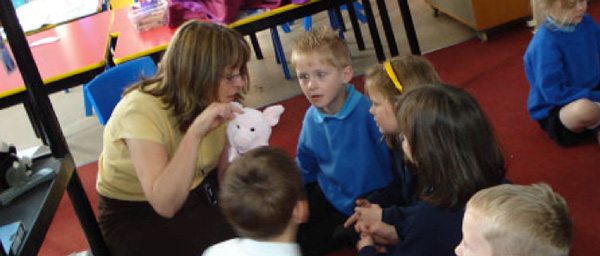Preparing your class
This exercise and comparing books with film will help get the most out of watching screen texts, and encourage children to think about how literature works. Both encourage exploration of what they already know about films and books, and allow children with all levels of literacy to share their knowledge. Children will begin to identify different patterns and elements used in storytelling and gain confidence in using terms that they will become familiar with such as character, plot, structure, genre.
Stage one - a story that doesn't work
A good way to start the discussion is with statement, such as 'Jonathan goes to school'. Ask the group whether this is a story, and if not, why not. What would you need to make it into a story?
You may get inundated with responses at this stage, and very specific responses at that, with everything from zombies attacking Jonathan, to Jonathan marrying a fairy princess. But now you're under way, and the children realise they know what they're talking about, you can begin to structure the discussion, and use the children's initial responses as reference points for teasing out information.
We have listed a few nuggets to help you lead your discussion, and some of our other headings Story, Setting, and Character will help you out.
If we write "The king died, and the queen died," we have a narrative, but if we write instead, "The king died, and then the queen died of grief" we have a plot. There is now a cause established between the two events
Stage two - a story that does work
As the class has no doubt told you, something has to happen. So now take a story the whole class has read.
Story
- Discuss the plot of the story.
- Start very broadly - beginning, middle and end - and work in more detail as you go.
- What different elements can the class identify in this story and others - highlight words like danger, relief, succeed, climax and so on. Twists and cliffhangers are always popular!
This exercise is a treat to help with stories and there are downloadable pdfs to go with it.
Genre
What kinds of stories are there? See how many the class can come up with. Can they give you the name of the genre? ('Comedy', rather than 'funny'). Discuss how the plots differ in different genres. And the elements they share.
Some pupils are able to identify quite sophisticated patterns, for example 'after a really scary bit there's a funny bit'.
Characters
What types of characters are to be found in all stories and are there specific characters the class associates with different genres? Again, you may get a huge range of answers from the very broad - goodies and baddies - to more specific answers such as 'a person who helps the hero'. Are there different places in the plot that different characters might appear?
Setting
How does the setting add to the story? What is its effect on the action, the characters, and how does the setting affect the mood of the story?
If your class are a little older or quite advanced you may want to jump straight to our how stories are told section.
